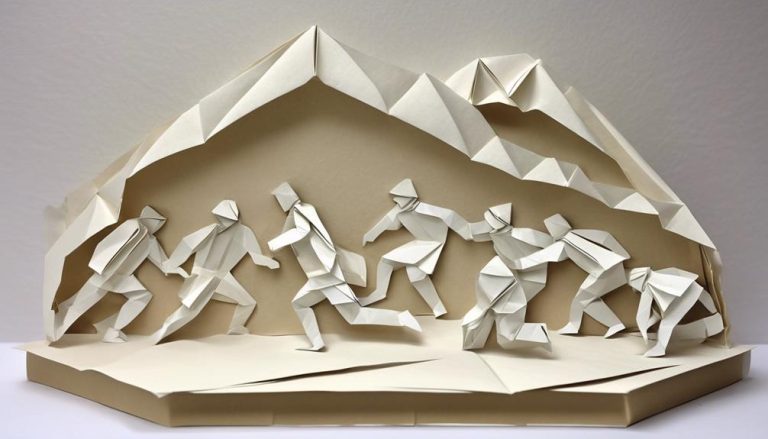General Rules of Snowboarding
You may think snowboarding rules are just for beginners, but even seasoned riders can benefit from a refresher on the basics. Dressing appropriately for the mountain conditions is crucial to your comfort and safety, but there's more to it than just warm layers and waterproof gear. As you glide down the slopes, keeping in mind some general rules can enhance your overall experience and contribute to a smoother ride for everyone. So, let's start with the first rule – dressing for success.
Dress Appropriately for Snowboarding
When hitting the slopes to snowboard, it's crucial to dress warmly and comfortably to ensure an enjoyable experience. Layering tips play a vital role in keeping you cozy and dry. Start with a moisture-wicking base layer to keep sweat away from your skin. Add an insulating layer like a fleece or down jacket to trap heat. Finally, top it off with a waterproof and breathable outer shell to protect you from snow and wind.
Gear essentials are equally important. Invest in quality snowboarding pants and jackets that are waterproof and breathable. Your hands and feet need proper protection too, so opt for insulated gloves or mittens and moisture-wicking socks. Don't forget a helmet to keep your noggin safe and warm goggles to shield your eyes from the elements.
Follow Mountain Safety Guidelines
To ensure a safe and enjoyable snowboarding experience, it is essential to adhere to mountain safety guidelines diligently. Being aware of avalanche risks and understanding safety protocols can make all the difference. Here are some key points to keep in mind:
- Avalanche Awareness: Stay informed about the avalanche risk levels in the area where you plan to snowboard. Take avalanche safety courses to learn how to recognize and avoid potential dangers.
- Mountain Weather: Always check the weather forecast before heading out. Sudden changes in weather can significantly impact your safety on the mountain. Be prepared for unexpected conditions.
- Mountain Conditions: Assess the snow conditions and terrain you will be riding on. Different terrains require different skills and techniques. Adjust your riding style accordingly.
- Emergency Preparedness: Carry essential safety gear such as a beacon, shovel, and probe in case of emergencies. Know how to use them effectively in rescue situations.
Practice Good Etiquette on Slopes
Observe and adhere to good etiquette practices while on the slopes to ensure a respectful and enjoyable snowboarding experience for all. Respect others on the mountain by being mindful of their space and skill levels. Slope manners are essential – yield to those who are downhill from you, avoid sudden stops in the middle of the trail, and always look before merging onto a new slope. Practice courtesy not only on the runs but also in lift lines; wait your turn and be patient with others.
Know Your Skill Level and Limits
Understanding your skill level and recognizing your limits is crucial for a safe and enjoyable snowboarding experience. Before hitting the slopes, take the time to assess your abilities and be honest with yourself about where you stand. Here's a guide to help you navigate this aspect of snowboarding:
- Assess abilities: Start by honestly evaluating your snowboarding skills. Are you a beginner, intermediate, or advanced rider?
- Push limits: While it's essential to stay within your comfort zone, don't be afraid to challenge yourself to improve. Gradually push your limits to enhance your abilities.
- Understand boundaries: Recognize what you are capable of and where you need to improve. Avoid attempting terrains or tricks that are far beyond your current skill level.
- Improve skills: Work on enhancing your techniques through practice and possibly taking lessons. Continuous improvement is key to enjoying snowboarding to the fullest.
Stay Aware of Surroundings
Being mindful of your surroundings is crucial for a safe and enjoyable snowboarding experience. To fully embrace the thrill of the sport while ensuring your safety, it's essential to stay focused on what's happening around you. By being aware of your surroundings, you can anticipate any obstacles, other riders, or changes in terrain, allowing you to react swiftly and confidently. Here are some key points to help you stay mindful on the slopes:
| Be Mindful | Stay Focused | Remain Alert | Observe Closely |
|---|---|---|---|
| Keep your eyes on the trail ahead. | Avoid distractions that may take your attention away from snowboarding. | Listen for any sounds that could indicate potential dangers. | Notice any changes in the snow conditions or visibility. |
| Be aware of other riders around you. | Focus on your technique and form to maintain control. | Watch out for warning signs or markers on the slopes. | Pay attention to the movements of other snowboarders nearby. |
| Stay updated on weather conditions. | Concentrate on your breathing and rhythm. | Stay vigilant for sudden changes in the environment. | Take note of any potential hazards or risky areas. |
Frequently Asked Questions
What Are Some Common Snowboarding Injuries and How Can They Be Prevented?
To avoid common snowboarding injuries, focus on helmet safety. Your muscle memory builds with proper technique, minimizing risk factors. Embrace safe practices to enjoy the slopes injury-free. Always remember, prevention is key.
How Should I Prepare My Snowboard Before Hitting the Slopes?
Before hitting the slopes, ensure your snowboard is in top shape. Give it some love by waxing it for a smooth glide and sharpening the edges for better control. These simple tips will enhance your ride!
Are There Any Specific Exercises I Can Do to Improve My Snowboarding Skills?
To enhance your snowboarding skills, engage in balance training, strength exercises for power, flexibility drills to move with grace, and agility workouts for quick, precise movements. These exercises will boost your performance on the slopes.
What Is the Best Type of Snowboard for a Beginner?
When starting out, opt for a snowboard that matches your weight and height. This helps with balance and control. Bindings play a crucial role too, ensuring a snug fit for stability. Enjoy the ride!
How Can I Properly Maintain My Snowboarding Gear to Ensure Longevity?
To ensure longevity and proper care of your snowboarding gear, maintenance is key. Store your equipment in a cool, dry place. Regularly check for damage and clean your gear after each use. This routine will extend its lifespan.






